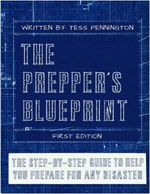
By Granny Spear
When we were growing our own food space was very important. We had a good sized garden, but not massive, and compost heaps take up a lot of room.
We disposed of human waste from the outhouse into pits, which we covered with soil. By the time we had filled pits right across the garden the first pits were okay to be dug again, not at all offensive. We did the same with our non-human waste, we buried it.
We had five compost pits, right in front of the human waste pits. There were paths between them a couple of feet wide so Ern could get into the outhouse pits. Compostable waste would be put into the hole and covered with a layer of soil that was piled up next to it from when ern dug it out. When it almost reached ground level Ern would put a thicker layer of soil on top so we could plant shallow rooted, quick cropping stuff there. He would leave a narrow path and dig the next hole to be filled. By the time they were all filled the first one was totally composted.
The sweet, crumbly compost was easily dug out, leaving the hole empty…ready to be filled again. it worked just fine and meant we didn’t have large amounts of growing land filled with compost heaps. There was also far fewer problems with wasps and bees nesting in there.
The human waste heaps worked the same way, burying it meant no nasty smells but obviously the ground level rose over time as we didn’t dig out the holes and use the stuff on the garden, well not until it had been there for a couple of years.
The pits were much closer together and it took just over a year to go across the garden before moving back to the first hole. The soil dug out when we went back to hole one would be piled alongside the pit just like before. After the second time going across the garden and arriving back at the first hole for the third time, Ern would mix the pile of soil with what came out of the compost pit. Then he would dig out the human waste pit, pile it next to the hole and the whole process would start again. It sounds complicated, but it wasn’t, not when you were doing it all the time. Ern was very organised, he had to be, feeding the family depended on it.
Now you can’t go on like this forever, the garden level would get too high, so, every couple of years, when he was starting the third cycle of the outhouse pits a cart from the farm would come and take away bags and bags of soil that would be used in the fields. Ern would dig the new compost into our garden soil, improving it for the next planting. It was a three year cycle, and it worked well. It was hard work, but most things were back then.
Regards
Maud




























